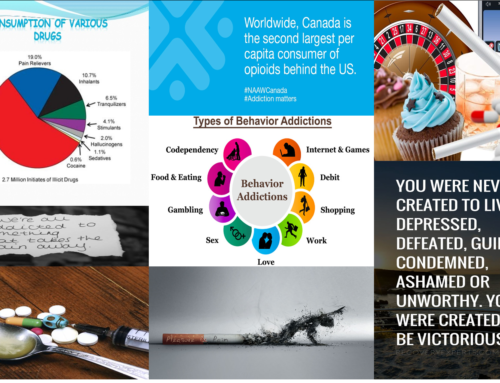Hey, this month is YOUTH month and August 12th is International Youth Day. So here is some brief information on our Youth, keeping in mind the amount of information available on the Internet!! Enjoy the read!!
The UN defines the worlds’ youth as the age group between 15 and 24 years old, making up one-sixth of the human population. Many of these young men and women live in developing countries and their numbers are expected to rise steeply.
The UN defines the worlds’ youth as the age group between 15 and 24 years old, making up one-sixth of the human population. Many of these young men and women live in developing countries and their numbers are expected to rise steeply.
The idea for International Youth Day was proposed in 1991 by young people who were gathered in Vienna, Austria, for the first session of the UN’s World Youth Forum. The forum recommended that an International Youth Day, especially for fundraising and promotional purposes, to support the United Nations Youth Fund in partnership with youth organizations. So, in 1998 a resolution proclaiming August 12th as International Youth Day was adopted during the World Conference of Ministers. That recommendation was later endorsed by the UN General Assembly in 1999. International Youth Day was first observed in 2000.
International Youth Day
The United Nations’ (UN) International Youth Day is celebrated on August 12 each year to recognize efforts of the world’s youth in enhancing global society. It also aims to promote ways to engage them in becoming more actively involved in making positive contributions to their communities. The UN’s International Youth Day is a United Nations day of observance but it is not a public holiday.
This year, International Youth Day 2016 is on Friday, August 12th.
What Do People Do?
Many activities and events that take place around the world on International Youth Day promote the benefits that young people bring into the world. Many countries participate in this global event, which may include youth conferences on issues such as education and employment. Other activities include concerts promoting the world’s youth, as well as various sporting events, parades and mobile exhibitions that showcase young people’s achievements.
Events on Youth Day in New West; Check out interesting activities planned by New West Youth Centre.
Youth and Employment
Career decision-making and Youth Unemployment in Canada
Stats Canada studied how consistent the career choices and expectations are among Canadian Youth from the age of 15 to 25 and compared employment and unemployment trends of youth (ages 15-24) to young workers (ages 25-29) and older workers (ages 30-54). The study further provided important insight into youth underemployment and skills under-utilization. The study used data collected from the Youth in Transition Survey, a survey conducted jointly by Statistics Canada and Employment and Social Development Canada (ESDC). The data collection period ran from 2000 to 2010.
Some of the questions asked in this study were: how often do those expectations change, what are the factors that increase consistency and what impact do consistent career expectations have on academic attainment?
The findings about Career decision-making patterns were:
- Majority of 25 year olds are uncertain about their career choices, a finding that is consistent across both genders.
- Youth whose parents placed a high importance on post-secondary education were more likely to have consistent career expectations between the ages of 15 to 25.
- Consistency in career decision-making was associated with earlier entry into post-secondary education.
- Youth who demonstrated consistency in career expectations were more likely to complete post-secondary education at the level of Bachelor’s degree or higher by the age of 25.
- While the youth unemployment rate reached 15.2 percent during the most recent recession, the rate was lower compared to two previous recessions (17.2 percent in 1993 and 19.2 percent in 1983 respectively).
- Canada’s youth population is expected to fall 7.1 percent by 2021 and 9.3 percent by 2029 for young workers.
- About half of employed youth worked in clerical, sales and service occupations in 2011 and older workers do not appear to be crowding out youth from these occupations.
- More youths were employed in high-wage occupations.
- Wages for youth workers increased, but skill under-utilization was prevalent among youth, especially those employed in clerical, sales, and service occupations.
- Youth with higher education no longer had an advantage in the labour market.
There are a number of factors that contribute to youth underemployment:
- Canada’s industry restructuring negatively affected youth underemployment.
- Youth were less willing to relocate to another region for work than in the past.
- The labour market information system should be improved to prevent the mismatching of job seekers and employers.
Youth Employment Strategy
The Youth Employment Strategy is the Government of Canada’s commitment to help young people, particularly those facing barriers to employment, get the information and gain the skills, work experience and abilities they need to make a successful transition into the labour market.
How is the program delivered?
- The Youth Employment Strategy is an initiative involving eleven federal departments and agencies. Each participating department or agency delivers programming in at least one program stream.
- The initiative is comprised of three program streams: Skills Link, Career Focus, and Summer Work Experience.
- Employers and organizations can apply for funding to offer employment opportunities to young people under these three program streams.
- Call 1-800-935-5555 (TTY: 1-800-926-9105)
- Consult the Service Canada’s Webpage about the Youth Employment Strategy.
New Westminster and British Columbia Youth Labour Market
Here are some facts about Youth employment in New Westminster and BC:
- There are a number of differences in labour force characteristics between youth (aged 15 to 29) and the remainder of the population and these differences are fairly common across Canada.
- Labour Attachment among youth rises with age, such that 25 to 29 year olds are actually more likely to participate in the labour force than those aged 30 and over.
- Participation rates are lower for those aged 15 to 24. School enrolment is a key factor in whether or not youth are in the labour force.
- Unemployment rates are considerably higher for youth compared to the remainder of the labour force. This is particularly true during economic downturn in B.C.
- Youth are more likely to be employed part-time than the rest of the workforce, but are less likely to be self-employed.
- Aboriginal youth in B.C. tend to have higher unemployment rates compared to non-Aboriginal youth in the province, hand in hand with lower levels of educational attainment.
- Immigrants, on the other hand, are more likely to have higher levels of educational attainment compared to those British Columbians born in Canada; however, they are less likely to join the labour force. These trends apply to youth as well as the overall population of immigrants.
- Youth in B.C. are more likely to be in occupations related to industries, such as retail salespersons and clerks, or food counter attendants and kitchen helpers compared with the rest of the labour force. Given that these occupations and industries offer lower wages than many other industries, the average wages of youth tend to be significantly lower than those of other wage earners.
The complete report is available for download.
How to help youth in New Westminster to get Employment
See the useful information in the following link: Red Book Online
Check this resource out for parents: WorkBC Parent Guide
For Employers, check this link out the new program: CONNECTIONS – a partnership of Fraser Works Co-operative and the New Westminster Chamber of Commerce.
References:
- Analysis of Statistics Canada data
- Certified General Accountants Association of Canada
- BC Stats ( bcstats.ca)
- ITA BC (itabc.ca)
- Government of Canada (servicecanada.ca)
- BC211 (redbookonline)
- Infoline (BC Stats)
- ©iStockphoto.com/Jacob Wackerhausen
- WorkBC






















